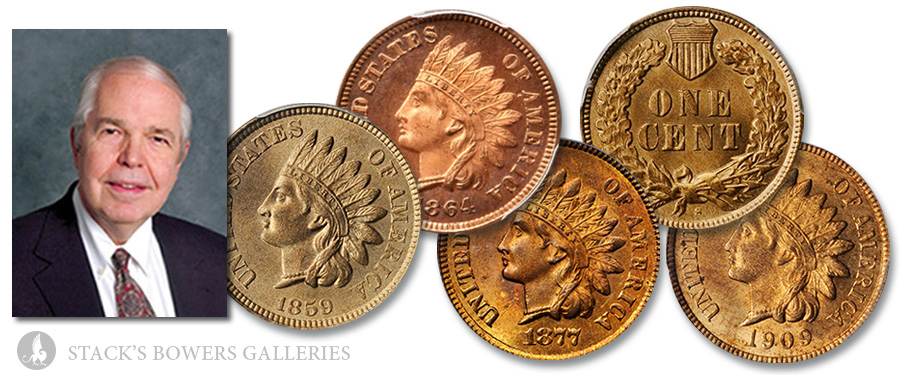
In 1859 a new design was adopted for the cent, incorporating on the obverse Miss Liberty dressed in an Indian war bonnet, with UNITED STATES OF AMERICA surrounding, and the date below. The design was by Chief Engraver Longacre. ?The reverse displayed a laurel or olive (in Mint correspondence, both words are used) wreath enclosing ONE / CENT in two lines. These were made in quantity—36,400,000 for circulation and perhaps a thousand or so Proofs for collectors. For reasons seemingly not recorded, the reverse die was deemed unsatisfactory.
Toward the end of the year a new reverse with an oak wreath (and other species) and shield was used to produce patterns, or perhaps they were made for circulation—for the finish was the circulation strike format, not Proof. It is not known how many were made, but 500 to 1,000 might be a good guess. The late John J. Ford, Jr., and the late Walter Breen considered that they might have been made as regular issues and listed them as such in the 18th (and final) edition of the Standard Catalogue of United States Coins.
Cents with the Indian Head obverse and the new Oak Wreath and Shield reverse were produced continuously through early 1909. In spring 1864 the copper-nickel alloy was discontinued, and bronze was substituted, consisting of 95% copper and 5% tin and zinc. This alloy remained in use into the 20th century and in 1909 was the standard for the new Lincoln cent. With some gaps, this was the alloy until early 1982.
In autumn 1864 the tiny initial L for Longacre was added to the ribbon on Miss Liberty’s bonnet. Today, about three bronze 1864 cents without L exist for each one with an L. For numismatists, Indian Head cents were popular, both in Proof format and as circulation strikes. Along the way the 1877 cent was recognized as the rarity in the series. Mint records state that just 852,000 were made for circulation, the only mintage to dip below several million in the series up to that point. It is possible that some of the cents struck in 1877 were from earlier-dated dies, for they were even harder to find in circulation than the low mintage might suggest.
In 1908 the San Francisco Mint struck cents for the first time – 1,115,000 pieces. Unlike the situation for the 1877 cent, the numismatic significance of the 1908-S was recognized by collectors at the time of issue, and modest quantities of Mint State coins were saved—making them scarce, but not rare today. In 1909 at San Francisco, 309,000 1909-S Indian Head cents were made, these too were saved at the time. Both the 1908-S and 1909-S cents were made of a bronze alloy that, when run through a metal strip rolling machine, stretched out certain incompletely blended components of the alloy (Bill Fivaz uses the term improper metal mix), resulting in a “wood grain” or streaky effect in the finished coins, this becoming noticeable later as the coins acquired natural light toning. Also, the alloy was slightly lighter and of a distinctive yellow-brass hue, quite unlike that used at Philadelphia at the time. Accordingly, it is possible to differentiate these cents by looking at the obverse only, and not checking for a mintmark, a little secret recognized by specialists, but not widely known. These same alloy characteristics are true for most of the Lincoln cents made in San Francisco in 1909, continuing into the early 1920s. Coins that have been dipped have lost these distinctions. Now you can tell the difference.?





